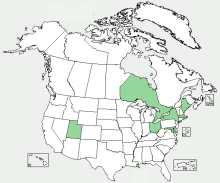Beech
Botanical name: Fagus sylvatica
Family: Beech (Fagaceae)
Collectability: plentiful, common, widespread, good
Main benefit
 source of carbohydrates and protein
source of carbohydrates and protein
Use - overview







Features and Identification
Habitat
Type: woods, often pure
Distribution: throughout northern hemisphere
Prefers: base soil
General
Growth type: tree
Cycle: deciduous
Height: up to 35 meters
Other: shady; bare ground below
 Leaf
Leaf
Shape: pointed oval
Texture: ribbed
Arrangement: alternate
Edge: toothed
Other: bright green in spring
 Trunk
Trunk
Colour: pale grey
Texture: smooth
 Flower
Flower
Arrangement: pairs
When: April to May with leaves
Colour:
 Seed
Seed
Shape: three-sided
Colour: red-brown
Size: small
Casing: prickly husk, four lobes open when ripe
Other: not every year, 3-8 year cycle
Type: woods, often pure
Distribution: throughout northern hemisphere
Prefers: base soil
General
Growth type: tree
Cycle: deciduous
Height: up to 35 meters
Other: shady; bare ground below
 Leaf
LeafShape: pointed oval
Texture: ribbed
Arrangement: alternate
Edge: toothed
Other: bright green in spring
 Trunk
TrunkColour: pale grey
Texture: smooth
 Flower
FlowerArrangement: pairs
When: April to May with leaves
Colour:

 Seed
SeedShape: three-sided
Colour: red-brown
Size: small
Casing: prickly husk, four lobes open when ripe
Other: not every year, 3-8 year cycle
Distribution Map

Caution Notes
 May be toxic if it contains tannin, and is consumed in large quantities. Tannin binds with protein, can interfere with iron absorption and can cause gastric pain, irritation to organs and liver damage. It is bitter and astringent and colours water dark. It may be reduced or removed by leaching in several changes of water, until it runs clear (not brown). Baking soda added to the water may speed up the process. Tannin breaks down with time.
May be toxic if it contains tannin, and is consumed in large quantities. Tannin binds with protein, can interfere with iron absorption and can cause gastric pain, irritation to organs and liver damage. It is bitter and astringent and colours water dark. It may be reduced or removed by leaching in several changes of water, until it runs clear (not brown). Baking soda added to the water may speed up the process. Tannin breaks down with time.
When Available?
 April to May
April to May all year
all year September and October
September and OctoberParts with black and white icons are for non-culinary use
Culinary Use
Flavour
Rating and Description:

 mild
mild

 nutty
nutty
How to Consume
 best young, raw; leaf curd
best young, raw; leaf curd
 raw, oil
raw, oil
Special preparation
 Difficult to peel, as very fiddly. Extract oil by crushing whole nut (without outer casing) and press the pulp. As some seeds may be mouldy in the shell, it is best to test them by putting them in water. Fertile, i.e. viable seeds will sink.
Difficult to peel, as very fiddly. Extract oil by crushing whole nut (without outer casing) and press the pulp. As some seeds may be mouldy in the shell, it is best to test them by putting them in water. Fertile, i.e. viable seeds will sink.
Nutrition
 fat, protein
fat, protein
Used as ...
 food
food
 food, condiment
food, condiment
Rating and Description:

 mild
mild
 nutty
nuttyHow to Consume
 best young, raw; leaf curd
best young, raw; leaf curd  raw, oil
raw, oilSpecial preparation
 Difficult to peel, as very fiddly. Extract oil by crushing whole nut (without outer casing) and press the pulp. As some seeds may be mouldy in the shell, it is best to test them by putting them in water. Fertile, i.e. viable seeds will sink.
Difficult to peel, as very fiddly. Extract oil by crushing whole nut (without outer casing) and press the pulp. As some seeds may be mouldy in the shell, it is best to test them by putting them in water. Fertile, i.e. viable seeds will sink.Nutrition
 fat, protein
fat, proteinUsed as ...
 food
food food, condiment
food, condiment
Medicinal Use
Action:
 (bark) antiseptic, antitussive, expectorant, febrifuge, odontalgic
(bark) antiseptic, antitussive, expectorant, febrifuge, odontalgic
May treat:
 (bark) skin
(bark) skin
 (bark) antiseptic, antitussive, expectorant, febrifuge, odontalgic
(bark) antiseptic, antitussive, expectorant, febrifuge, odontalgicMay treat:
 (bark) skin
(bark) skin
Other Use
 (trunk) timber
(trunk) timber
Collection, Storing and Notes
Collection
 ripe seeds fall to the ground; good mast years rotate on a three or more year cycle
ripe seeds fall to the ground; good mast years rotate on a three or more year cycle
 ripe seeds fall to the ground; good mast years rotate on a three or more year cycle
ripe seeds fall to the ground; good mast years rotate on a three or more year cycle
Key
Plant parts:
 leaf
leaf
 stem or trunk
stem or trunk
 sap
sap
 root, bulb, tuber and other below ground parts
root, bulb, tuber and other below ground parts
 flower
flower
 fruit
fruit
 seed
seed
Parts with black and white icons in the availability section are for non-culinary use
Use:
 culinary use
culinary use
 medicinal use
medicinal use
 household use
household use
Other:
 caution
caution
 leaf
leaf stem or trunk
stem or trunk sap
sap root, bulb, tuber and other below ground parts
root, bulb, tuber and other below ground parts flower
flower fruit
fruit seed
seedParts with black and white icons in the availability section are for non-culinary use
Use:
 culinary use
culinary use medicinal use
medicinal use household use
household useOther:
 caution
caution
Glossary
Glossary of Medicinal Terms and Nutritive Substances
- antiseptic: prevents putrefaction (applied to wounds)
- antitussive: prevents or relieves coughing
- expectorant: removes excess amount of mucus from respiratory system (see also decongestant)
- febrifuge: reduces fever; use only for dangerously high temperature; a raised temperature is the body's way of burning up the pathogen
- odontalgic: treats toothache (temporarily) and other problems of the teeth and gums




